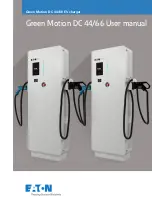
Practical tips
Practical tips
Checking and refilling lev-
els
Refuelling
Refuelling
Fig. 305
Fuel tank flap with tank cap attach-
ed.
The fuel tank flap is on the rear right of the
vehicle.
The flap that covers the tank cap is unlocked
and locked automatically using the central
locking.
●
Open the fuel tank flap by pressing on the
left side.
●
Unscrew the cap by turning it to the left.
●
Place it in the space on the hinge of the
open flap
›››
●
Start refuelling. The tank is full as soon as
the pump’s automatic nozzle cuts off the fuel
supply. Do not try to put in more fuel after the
nozzle cuts out, as this will fill the expansion
chamber in the fuel tank.
●
Unscrew the cap by turning it to the right as
far as it will go.
●
Close the lid.
The correct fuel grade for your vehicle is giv-
en on a sticker on the inside of the fuel tank
flap. Further notes on fuel can be found at
The capacity of your vehicle's fuel tank is giv-
en in
.
WARNING
Fuel is highly flammable and can cause se-
rious burns and other injuries.
●
When refuelling, turn off the engine, the
auxiliary heater
and turn off the
ignition for safety reasons.
●
Do not smoke when filling the fuel tank or
a canister. Naked flames are forbidden in
the vicinity due to the risk of explosion.
●
Observe legislation governing the use,
storage and carrying of a spare fuel canis-
ter in the vehicle.
●
For safety reasons we do not recommend
carrying a spare fuel canister in the vehi-
cle. In an accident the canister could be
damaged and could leak.
●
If, in exceptional circumstances, you
have to carry a spare fuel canister, please
observe the following points:
–
Never fill fuel into the spare fuel canis-
ter if it is inside or on top of the vehicle.
This could cause an explosion. Always
place the canister on the ground to fill
it.
–
Insert the filling nozzle as far as possi-
ble into the spare fuel canister.
–
If the spare fuel canister is made of
metal, the filling nozzle must be in con-
tact with the canister during filling. This
helps prevent an electrostatic charge
building up.
–
Never spill fuel in the vehicle or in the
luggage compartment. Fuel vapour is
explosive. Risk of fatal accident!
CAUTION
●
If any fuel is spilt onto the vehicle, it
should be removed immediately. It could
otherwise damage the paintwork.
●
Never run the tank completely dry. The
catalytic converter can be damaged.
●
When filling the fuel tank after having run
it completely dry on a vehicle with a diesel
engine, the ignition must be switched on for
at least 30 seconds before starting the en-
gine. When you then start the engine it may
342
Summary of Contents for Tarraco 2020
Page 64: ...Operation Fig 56 Instruments and controls 62 ...
Page 170: ...Infotainment System Main menus Fig 161 Menu summary 168 ...
Page 394: ...Technical data Dimensions Fig 325 Dimensions 392 ...
Page 396: ......
Page 412: ......
Page 413: ......
Page 414: ......
Page 416: ...Owner s manual SEAT Tarraco 5FJ012720BD Inglés 5FJ012720BD 11 19 SEAT Tarraco Inglés 11 19 ...
Page 417: ...Appendix to Owner s manual SEAT Tarraco FR ...
Page 418: ......
















































